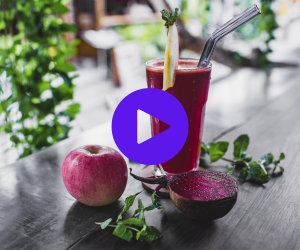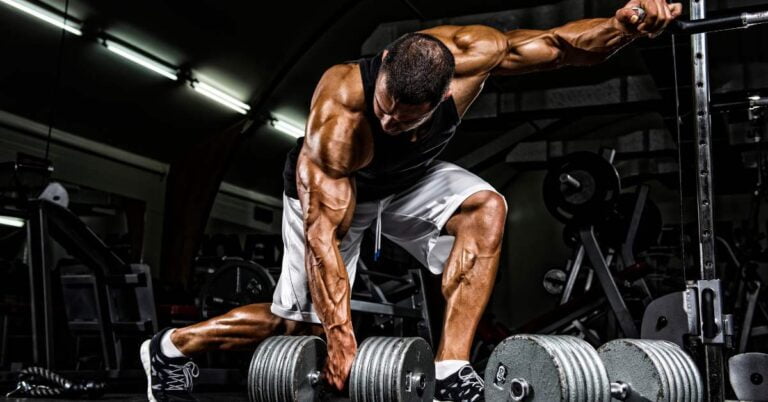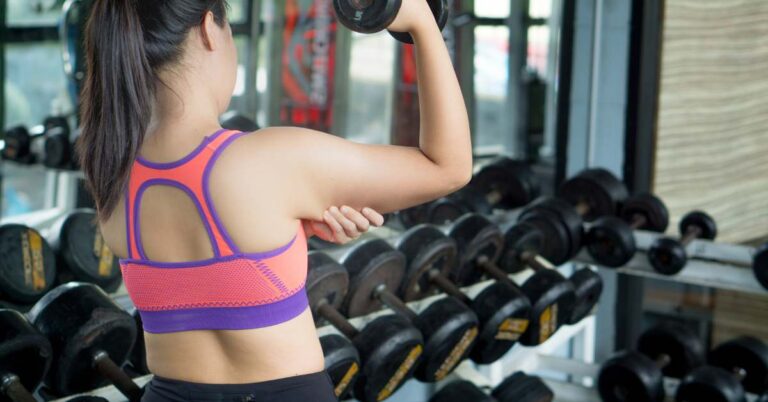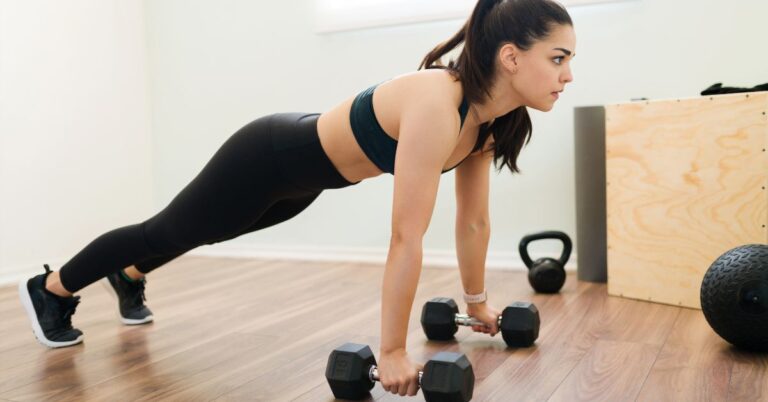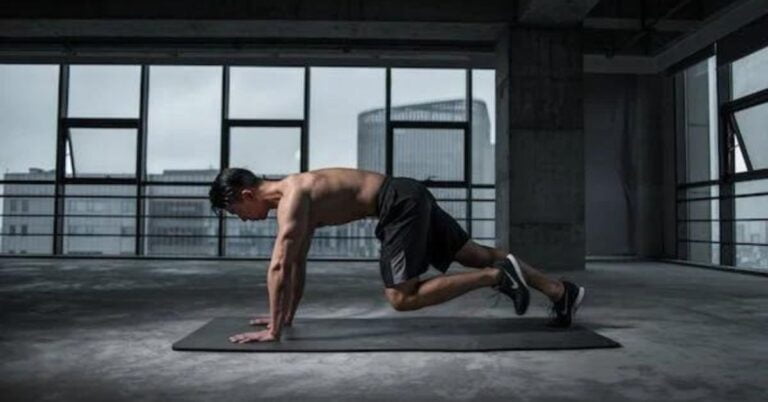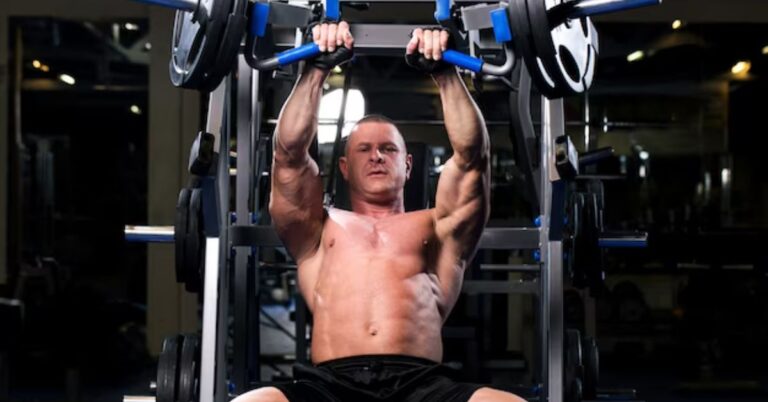Beginner Single Kettlebell Workout: Unlock Your Fitness Potential
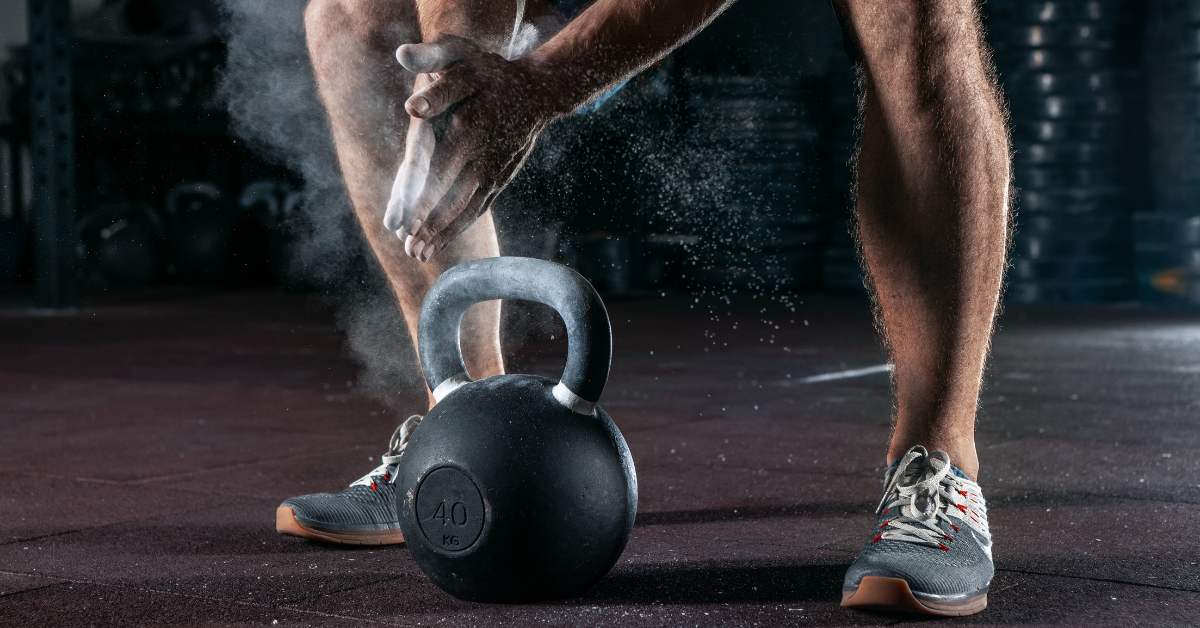
Welcome to the world of kettlebell workouts! If you’re a beginner looking to kickstart your fitness journey, the beginner single kettlebell workout is a fantastic choice. This article will provide a comprehensive guide to help you start your path to strength and fitness.
Using a single kettlebell for various exercises that target different muscle groups is the basis of a beginner’s single kettlebell workout. It’s a great approach to increase your strength, cardiovascular fitness, and general athleticism. You may get a full-body exercise that works numerous muscles simultaneously with only one piece of equipment.
Kettlebell training is a standard option among fitness lovers since it has several advantages. It not only offers a thorough exercise, but it also fosters the development of functional strength, stamina, and core stability. In addition, kettlebell workouts closely resemble motions used in daily life, making them very useful.
Choosing the appropriate kettlebell weight for your fitness level is crucial when beginning your kettlebell adventure. Beginners should start with a lighter kettlebell to concentrate on perfecting good form and technique. As you improve, you may progressively raise the weight and feel more comfortable pushing yourself further.
Any training program must prioritize safety, and kettlebell exercises are no different. Emphasize properly warming up before each session and keeping perfect form during the workouts. Pay attention to your body, pause as necessary, and gradually raise your exercises’ difficulty level.
Let’s get into the exact exercises and workouts that will help you reach your fitness objectives now that you have an outline of what the beginner single kettlebell workout comprises. Get ready to alter your physique by embracing the power of kettlebells!
Benefits of Kettlebell Workouts
Kettlebell exercises are great for beginners and fitness lovers since they have a lot of advantages. Your general health and well-being may significantly improve by including a beginner single kettlebell workout in your program.
Kettlebell exercises provide a full-body workout, one of its main advantages. Kettlebell workouts include numerous muscles at once instead of isolated exercises that concentrate on a single muscle group. This all-encompassing strategy results in greater strength and muscle tone throughout your body.
A beginner single kettlebell workout is beneficial for enhancing strength and stamina. Kettlebell workouts put your muscles and cardiovascular system to the test by combining resistance and cardiovascular components, improving your overall fitness and life.
Another area where kettlebell exercises thrive is cardiovascular fitness. Kettlebell workouts increase your heart rate and provide a good cardio workout by combining dynamic motions and high-intensity intervals. As a result, kettlebell workouts are a quick substitute for conventional aerobic activities.
Exercises with a kettlebell also help to stabilize the core. It would help if you used your core muscles throughout kettlebell workouts to stay balanced and stable. Along with helping to strengthen your core, this also helps to align your body and improve your posture in general.
Furthermore, functional motions are a hallmark of kettlebell exercises. Exercises resembling ordinary motions, like lifting, swinging, and carrying, are helpful. This practical component boosts your effectiveness in everyday activities and sports while enhancing overall fitness.
Also check: The Ultimate 5-Day Split Workout for Maximum Gains
Choosing the Right Kettlebell
The right kettlebell is crucial for a beginner single kettlebell workout to be secure and prosperous. Using the correct weight, you may complete exercises with the best form and technique possible, minimizing injuries and accelerating your growth.
It is advised to begin with a lighter kettlebell as a novice. As a result, you may concentrate on perfecting the exercises and establishing good technique before advancing to higher weights. Beginners should typically use a kettlebell that weighs between 8 kg (18 lbs) and 12 kg (26 lbs). However, the precise importance that’s best for you will depend on your current strength and fit.
Pick a kettlebell with a handle that is stable and pleasant to hold. The handle must be broad enough for both hands to fit comfortably, providing a secure hold when exercising. Choosing a kettlebell with a smooth and resilient surface is helpful to guarantee a safe and enjoyable exercise.
It’s important to remember that adjustable kettlebells are available, allowing you to modify the weight plates to suit your demands. This adaptability is advantageous since it lets you gradually add weight as you advance in your fitness quest.
Consult a fitness expert or trainer who can evaluate your fitness level and advise you on the ideal kettlebell weight for your unique requirements. Additionally, they may assist you with technique and perfect form to ensure a secure and efficient exercise.
Safety Precautions
When doing a beginner single kettlebell workout, safety should always come first. Kettlebell training has many advantages, but taking safety measures to avoid accidents and guarantee safe and productive exercise is vital.
It’s essential to warm up properly before beginning your kettlebell exercise, first and foremost. Your muscles and joints are better prepared for the physical demands of the workouts with a good warm-up. Jumping jacks, arm circles, and high knees are examples of dynamic exercises you may do to speed up your heart rate and loosen up your muscles.
Every exercise must be performed with perfect form and technique to ensure safety and efficacy. The incorrect format may put unnecessary tension on your muscles and joints, which raises the possibility of injury. Spend time learning and perfecting the proper form for each kettlebell motion, paying particular attention to keeping your spine neutral, activating your core muscles, and controlling your breathing.
It’s crucial to begin with lesser weights as a beginner and then go up to bigger ones as your strength develops. An injury might result from pushing oneself too far or using too heavy weights. Any discomfort or pain should be paid attention to by listening to your body. Starting with lesser weights and progressively stepping up the intensity over time is preferable.
During your exercise, it’s crucial to take pauses as required. Overexertion may impair your form, cause tiredness, and increase your risk of injury. Before resuming your exercise, it’s crucial to relax and recuperate if you feel unduly exhausted or in discomfort.
Since kettlebell workouts may be physically taxing, staying hydrated during training is essential. You avoid dehydration; drink water before, during, and after exercise.
Warm-Up Exercises
A complete warm-up is necessary before starting your beginner single kettlebell workout. An excellent introduction enhances blood flow to your muscles, lowers the chance of injury, and helps your body prepare for strenuous exercise. Here are some efficient warm-up activities you may add to your schedule:
Jump Jacks
Jumping jacks are an excellent traditional warm-up activity to start with. Your whole body is used during this activity, which speeds up your heart rate and strengthens your muscles.
Arm Circles
Your arms should be out to the sides as you stand with your feet shoulder-width apart. Start by creating little circles with your arms and progressively enlarge them. This workout lets you loosen up your upper body and shoulder joints.
Knees Up
Lift your knees as high as possible while standing tall and marching in place. This workout stimulates the muscles in your legs, improves mobility, and boosts your heart rate.
Hip Rotations
Place your hands on your hips as you stand with your feet hip-width apart. Change the direction of the revolutions on your hips between clockwise and anticlockwise. Your hip joints and lower body will warm up due to this activity.
Shoulder Rolls
Roll your shoulders back in a circular motion while standing tall. This exercise aids in neck, upper back, and shoulder tension relief.
For 30 seconds or one minute, progressively increase the intensity of each warm-up activity. During the warm-up, keep your breath deep and concentrate on using the proper form and technique.
Including these warm-up exercises in your beginner single kettlebell workout will prepare your body appropriately for impending physical activity, improve flexibility, and reduce the chance of injuries. Any fitness program should include warm-up exercises, which are very important.
Beginner Single Kettlebell Workout Routine
A well-rounded beginner single kettlebell workout regimen will help you develop strength, increase cardiovascular fitness, and improve your overall athleticism if you’re new to kettlebell training. To get a full-body workout, include the following movements in your routine:
Goblet Squats
Hold the kettlebell in your hands at chest height to start. Squats are performed by bending your knees and thrusting your hips back while standing with your feet shoulder-width apart. Drive through your heels to return to the starting posture while keeping your chest high. 3 sets of 10–12 repetitions are ideal.
Single-Arm Swings
Your feet should be broader than shoulder-width apart when you stand. Swing the kettlebell explosively up by pushing your hips forward while holding it in one hand between your legs. Let the kettlebell swing back between your legs while maintaining a long arm. Work each side for 3 sets of 10–12 repetitions.
Turkish Get-Ups
Begin by laying on your back and gripping a kettlebell in one hand with the arm stretched upward. Keep your eyes on the kettlebell as you slowly raise yourself to a standing position. To go back to the beginning, reverse the motions. Aim for 2-3 sets of 5–6 reps on each side.
Renegade Rows
Put your hands on the kettlebell handles in the push-up position. As you support your torso with the opposite arm, row one kettlebell to the side. Perform 2-3 sets of 8–10 repetitions on alternate sides while performing rows.
Overhead Press
With your palm facing front, hold the kettlebell with one hand at shoulder height. Your arm should be extended to press the kettlebell above. Reverse the motion by lowering it to its initial position. 2-4 sets of 8–10 repetitions should be done on each side.
Russian Twists
Kneel on the floor with your feet flat. Hold the kettlebell in front of your chest with both hands. To touch the kettlebell to the ground on each side, lean back slightly and rotate your body. Do three sets of 12–15 repetitions.
Farmer’s Carry
Walk forward for a certain distance or time while holding a kettlebell in each hand at your sides. Maintain a straight back and a tight core. Perform a distance of 50–100 feet or 2-3 sets of 30–60 seconds.
Before beginning the exercise, remember to warm up enough and finish with stretches to cool down. As you grow more used to the motions, progressively increase the intensity while starting with lesser weights. To allow for recovery, pause between sets for a minute or two.
This beginner single kettlebell workout regimen targets the main muscle groups while improving stability, strength, and endurance. It offers a strong starting point for your kettlebell fitness adventure. Maintain good form, pay attention to your body, and seek advice from a fitness expert if necessary. Enjoy your kettlebell exercise and advance towards your fitness objectives at your speed.
Cooling Down
Including a suitable cool-down exercise after a beginner single kettlebell workout is crucial. Cooling down aids recovery by allowing your body to gradually shift from active to resting. Here are some efficient methods for calming down to include in your routine:
Gentle Cardiovascular Exercise
Spend 5–10 minutes doing low-intensity cardiovascular exercises like brisk walking or mild running. This makes it possible to progressively drop your heart rate and transition smoothly from vigorous activity.
Static Stretching
Static stretches that target the main muscle groups engaged throughout your training should be done. Hold each space without jumping or inflicting pain for 15 to 30 seconds. Make hamstrings, quadriceps, calves, chest, and shoulders your primary focus.
Deep Breathing
Include breathing techniques to help you relax and get your body back to sleep. Breathe slowly and deeply, inhaling through your nose and exhaling through your mouth. Your body will feel less tense, and your mind will be more relaxed.
Foam Rolling
Flexibility is increased, and muscular tension is released with a foam roller. Focus on any tight or painful places as you gently roll over your main muscle groups. This self-myofascial release method may improve muscle repair and lessen discomfort after exercise.
Hydration
To rehydrate your body after exercise, drink plenty of water. Proper hydration is crucial to replace fluids lost during exercise and promote muscle repair.
Your body may gradually return to its pre-exercise condition by cooling down, which lowers your risk of fainting, dizziness, or muscular cramps. Additionally, it increases flexibility and aids in removing metabolic waste products from your muscles, reducing the likelihood of post-workout muscular stiffness.
As vital as warming up and doing the exercise itself is cooling down. It enables optimal bodily recovery, reducing muscular pain and maximizing fitness gains. Put these methods of winding down into your routine to guarantee a secure and wholesome exercise.
Conclusion
Finally, the beginner single kettlebell workout can increase strength, boost cardiovascular fitness, and develop overall agility. You may target different muscle groups and obtain full-body training by doing exercises like goblet squats, single-arm swings, Turkish get-ups, renegade rows, overhead presses, Russian twists, and farmer’s carries. Safety must always come first, so correctly warm up, use the correct form and technique, gradually increase the intensity, and pay attention to your body’s signals.
Furthermore, including a suitable cool-down program that includes static stretching, deep breathing, foam rolling, and water aids in recovery and lessens post-workout muscular pain. With devotion, perseverance, and advancement, the beginner single kettlebell workout may assist you in reaching your fitness objectives and enhancing your general well-being.
FAQ
Can I do a beginner single kettlebell workout without exercising?
Absolutely! The beginning single kettlebell workout is created for those who have never used a kettlebell before. You may advance at your speed since the exercises are introduced progressively. Before stepping up the intensity, start with fewer kettlebell weights and concentrate on perfecting the appropriate form and technique.
How many times a week should I do a beginner single kettlebell workout?
It is advised for beginners to begin with two to three workouts each week. Your body will have time to recuperate and adjust to the new exercise stimulus. You may progressively increase your exercise frequency as you become more used to it and grow more fit.
What kettlebell weight should I start with?
Your current strength and fitness level will determine the right kettlebell weight for you. Beginners should aim for a kettlebell that weighs between 8 kg (18 lbs) and 12 kg (26 lbs) for ladies and between 12 kg (26 lbs) and 16 kg (35 lbs) for men as an essential starting point. Remember that it is preferable, to begin with a lesser weight and concentrate on the appropriate technique before increasing the weight.
Can I modify the exercises if I have limitations or injuries?
Yes, paying attention to your body and adjusting as necessary is crucial. Consult a physical therapist or fitness expert if you have any restrictions or injuries so they may suggest routines you can adapt to match your requirements. They might provide changes or alternative movement suggestions to protect your safety and avoid more injuries.
How long should a beginner single kettlebell workout session last?
The length of a beginner’s single kettlebell workout, including warm-up and cool-down periods, is usually 30 to 45 minutes. The size may change according to the number of sets, repetitions, and rest intervals. Prioritise quality above quantity while working out, and always keep your form correct.
Before beginning any new fitness program, speak with a doctor, particularly if you have any current medical ailments or concerns. Pay attention to your body, progress slowly, and enjoy becoming more potent and fitter with the beginning single kettlebell workout.






